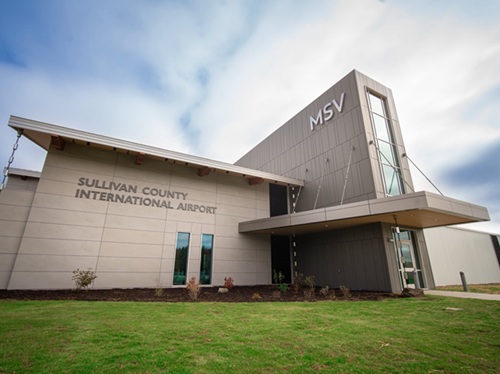A new report from TRIP, a Washington, D.C.-based transportation research nonprofit, examines the causes and costs of the surge in U.S. traffic fatalities through 2020 and 2021 during the COVID-19 pandemic – numbers that, while decreasing slightly in 2022, remain at a high level as vehicle travel returns to near pre-pandemic levels.
[Above photo by Minnesota DOT]
That new report – entitled “Addressing America’s Traffic Safety Crisis: Examining the Causes of Increasing U.S. Traffic Fatalities and Identifying Solutions to Improve Road User Safety” – documents the increase in the number and rate of traffic fatalities from 2019 to 2022 at the national and state levels, examines causes and calculates the cost of both fatal and serious traffic crashes, then offers a “broad, comprehensive approach” to reducing them.
The report detailed that, in April 2020, as most activity was curtailed in an effort to slow the spread of COVID-19, U.S. vehicle miles traveled or VMT fell 40 percent compared to April 2019. By the end of 2020, overall U.S. VMT was 11 percent lower than in 2019. In 2021, VMT rebounded to 4 percent below 2019 and inched up to 1 percent below 2019 levels by 2022.
However, from 2019 to 2022, the number of traffic fatalities and the rate of traffic fatalities per 100 million VMT soared and has remained significantly higher than pre-pandemic levels.
TRIP’s report said the number of U.S. traffic fatalities increased 19 percent from 2019 to 2022 – from 36,096 to 42,795 – and the nation’s fatality rate per 100 million VMT increased 22 percent during that time, from 1.11 to 1.35.
Bicyclist and pedestrian fatalities, which accounted for 20 percent of all traffic fatalities in 2022, increased 19 percent from 2019 to 2022. From 2019 to 2022, the number of pedestrians killed increased 18 percent (from 6,205 to 7,345) and the number of bicyclists killed increased 26 percent (from 846 to 1,068).
U.S. motorcyclist fatalities increased by 20 percent from 2019 to 2022, from 5,015 to 6,000. That also coincided with the rise in the share of motorcyclists who reported not wearing helmets, which increased from 17 percent to 29 percent from 2019 to 2021, TRIP found. While motorcycle travel accounted for 0.6 percent of annual VMT in 2021, motorcyclists represented 14 percent of traffic fatalities that year.
TRIP’s report said this significant increase in traffic fatalities during and after the COVID-19 pandemic appears largely related to increased risks being taken by motorists.
In a 2021 report, the National Highway Traffic Safety Administration found that “after the declaration of the public health emergency in March 2020, driving patterns and behaviors in the United States changed significantly. Of the drivers who remained on the roads, some engaged in riskier behavior, including speeding, failure to wear seat belts, and driving under the influence of alcohol or drugs.”
The AAA Foundation for Traffic Safety drew similar conclusions about the role of increased risks being taken by drivers during the pandemic. A survey conducted by AAA with motorists in October and November 2020 found that drivers who maintained or increased their pre-COVID travel levels indicated that they were more likely to engage in risky driving behavior, including speeding, not wearing a seat belt, being impaired and driving aggressively.
Other data added to the risky driver picture, TRIP’s researchers found. NHTSA indicated the number of people killed in police-reported alcohol involved crashes increased 22 percent from 2019 to 2022, with the number of passenger vehicle occupants not wearing seatbelts who were killed increased 20 percent from 2019 to 2022.
NHTSA also found that the number of people killed in speeding-related traffic crashes climbed 23 percent from 2019 to 2022, and represented 27 percent of U.S. traffic fatalities in 2022. From 2019 to 2021, the number of fatalities in distraction affected traffic crashes increased by 13 percent, from 3,119 to 3,522, while traffic fatalities in U.S. highway work zones increased by 13 percent, from 845 to 956, over the same period.
Based on NHTSA traffic crash cost methodology, TRIP estimated that fatal and serious traffic crashes in the U.S. in 2022 caused a total of $1.9 trillion in the value of societal harm, which includes $465 billion in economic costs and $1.4 trillion in quality-of-life costs.
TRIP pointed to the National Roadway Safety Strategy or NRSS issued by the U.S. Department of Transportation in January 2022 – one that state and local transportation agencies are adopting – as a key part of a country-wide effort to combat this increase in traffic fatalities.
[Editor’s note: The American Association of State Highway and Transportation officials as well as AASHTO members Washington State Department of Transportation and Missouri Department of Transportation were among the initial members of USDOT’s “First Movers” Roadway Safety Partnership launched in February.]
Increasing investment in roadway safety improvements is likely to pay off in the form of reduced fatal and serious traffic crashes. The U.S. has a $146 billion backlog in needed roadway safety improvements, according to a 2017 report from the AAA Foundation, which found implementing cost-effective and needed roadway safety improvements on U.S. roadways would save approximately 63,700 lives and reduce the number of serious injuries as a result of traffic crashes by approximately 350,000 over a 20-year period.
Funding included within the Infrastructure Investment and Jobs Act or IIJA is also poised to help reduce traffic fatalities as well, TRIP said, as the measure provides $6 billion for the “Safe Streets and Roads for All” program; $17 billion for the Highway Safety Improvement Program; $4 billion for improved crash data and vehicle, behavior, and truck safety programs; $300 million for rural road safety; and $120 million for tribal road safety.
“Making a commitment to eliminating fatal and serious injuries on the nation’s roadways will require robust investment and coordinated activities by transportation and safety-related agencies,” noted Dave Kearby, TRIP’s executive director, in a statement.
Such a broad collaborative effort on a national scale “will provide needed layers of protection for the nation’s motorists, pedestrians and bicyclists, including safe road users, safe roads, safe vehicles, safe speeds and high-quality post-crash care,” he said.
 Top Stories
Top Stories
New Study Finds Cannabis Use Impacting Vehicle Crashes
October 17, 2025 Top Stories
Top Stories

